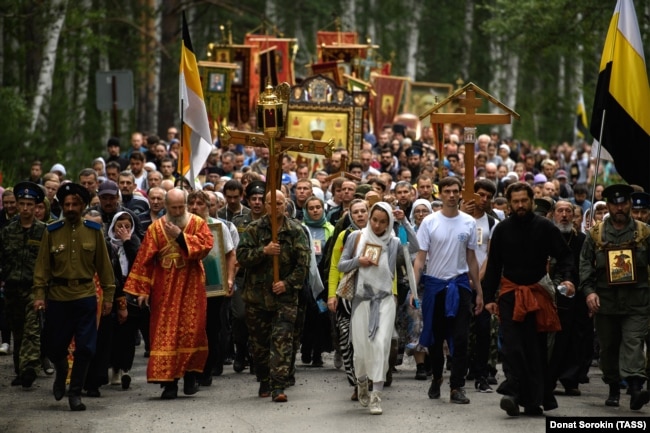Remembering the Romanovs!
On the 16th of July 1917, Tsar Nicholas II and the Romanov family were shot and clubbed to death by Bolshevik terrorists in the basement of Ipatiev House.
Now, Russian investigators say they are probing the possibility that Tsar Nicholas II and his family were murdered in a “ritual killing.”
The revelation echoes a conspiracy theory that the Bolshevik Revolution 101 years ago and the murder of Nicholas II. It came to light at a conference at Moscow’s Sretensky Monastery on November 27 attended by the head of the Russian Orthodox Church, Patriarch Kirill, that was called to discuss a new investigation into the tsar’s murder.

Marina Molodtsova, a senior investigator at the Investigative Committee, a Russian equivalent of the FBI, told the conference that a commission examining the death would conduct a “psychological-historical examination” to check the claims of a ritual murder.
At the same conference, Bishop Tikhon, an influential priest known as Vladimir Putin’s confessor because of his proximity to the Russian president, said the theory of a ritual killing is widely held within a church commission examining the murder.
“We relate most seriously to the version of a ritual murder,” Tikhon was quoted by TASS news agency as saying. “What’s more, for a significant part of the church commission there is no doubt that that is what happened.”
‘Reason For Persecutions’
The tsar’s family — Nicholas, his wife Alexandra, their five children — and doctor and three servants were murdered on Vladimir Lenin’s orders on July 17, 1918, in the basement of a merchant’s mansion in Yekaterinburg.
The killings were the subject of considerable speculation following the collapse of the Soviet Union, and a government commission was charged with clarifying the circumstances of the murders and identifying their remains.
In 1995, the Russian Orthodox Church formally submitted 10 questions to the commission. Church officials at the time said they sought to obtain conclusive evidence to finally nix the theory. The commission was led by former Deputy Prime Minister Boris Nemtsov and found no evidence to support the claim.
The tsar’s and his family’s remains were identified, and Nicholas II was canonized in 2000.
‘Absolutely Wild’
At the behest of the Russian Orthodox Church, an investigation into the murder was reopened in 2015, since some wings of the church reportedly had doubts that all the remains were genuine. The situation around the remains is expected to be discussed at a Bishops’ Council of the Russian Orthodox Church later this week.
The meeting at Sretensky Monastery was held on November 27 in order to discuss the preliminary findings of the investigation.
Borukh Gorin, a speaker for the federation, told Interfax that the claims of a ritual murder were “absolutely wild.” He called the allegation “absurd.” “It is absolutely terrifying 100 years later to hear the phrase ritual killing from the mouth of an investigator of the Investigative Committee and then from a high placed hierarch of the Russian Orthodox Church.”
Lyudmila Narusova, a lawmaker in the Federation Council and mother of TV personality and presidential hopeful Ksenia Sobchak, joined the criticism, saying they appeared to mark a “return to some kind of obscurantism.”
In a follow-up statement to state agency RIA Novosti on November 28, Bishop Tikhon appeared to try and deflect the criticism, arguing that the murder of Nicholas II could have taken on “ritual” significance because of his status as Russia’s last tsar.
“The murder of the tsar and his family, which put a final end to the existence of the Romanov dynasty hated for its 300-year rule, was a very special matter that bore a ritual, symbolic meaning for many people,” he said.
Share this page!



